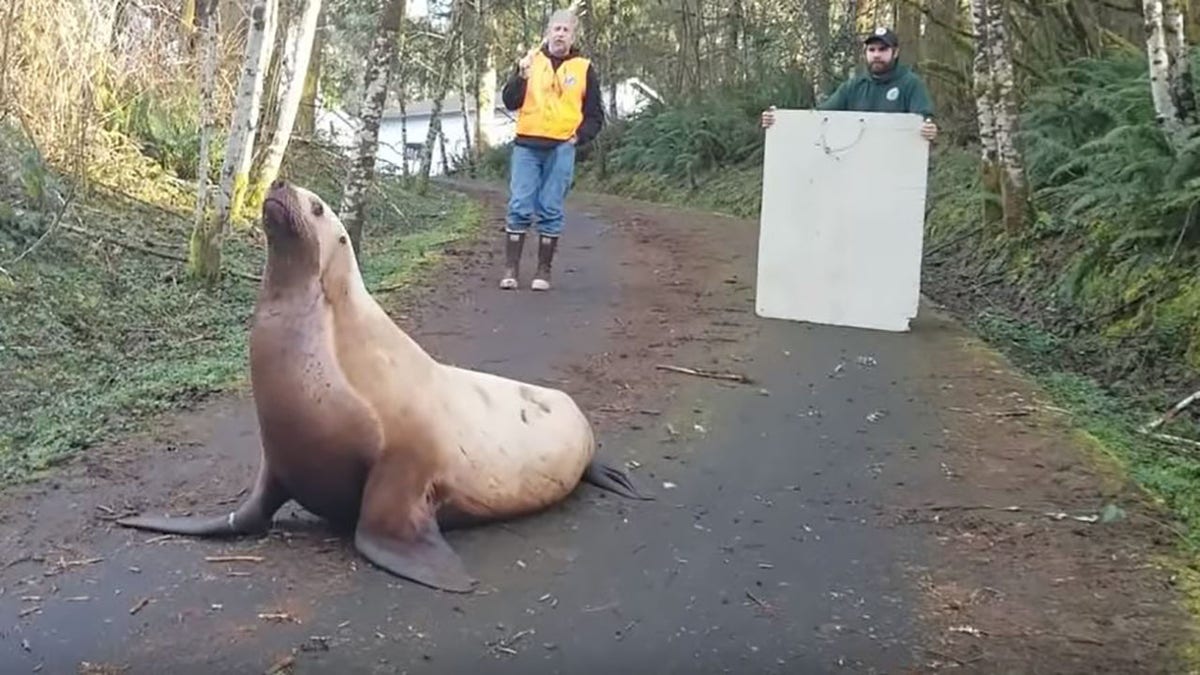
(Cowlitz County Sheriff’s Office)
The decapitated bodies of at least five sea lions found on the shores of Vancouver Island, Canada, over the past few months hint that there may be a marine-mammal serial killer on the loose, or perhaps someone who is lopping off the heads of already dead sea lions, according to news sources.
It's unclear how these animals died, but after looking at photos of the dead animals, Anna Hall, a marine mammal zoologist at Sea View Marine Sciences, a company that uses acoustics to monitor marine animal movement, said that humans are likely to blame.
"To me, this looks intentional, whether it's by a single person or a group of people," Hall told the Canadian news outlet CTV News. "I sincerely hope that Fisheries and Oceans Canada pursues this case to determine who is doing this and to bring them to justice because this is a violation of federal law."
Related: Images: Sea lion pups make a splash
The images also indicate that the species is a Steller sea lion (Eumetopias jubatus), Hall added. These animals, which live along parts of the Pacific Coast of North America, Japan and Russia, are near-threatened, according to the International Union for Conservation of Nature. They are the fourth largest pinniped (a group that includes seals, sea lions and walruses), as males can reach lengths of up to 10.8 feet (3.3 meters) and weigh an average of 2,200 lbs. (1,000 kilograms), according to the 2009 Encyclopedia of Marine Mammals (Second Edition).
Deborah Short, a resident of Nanaimo, a city on Vancouver Island, said she noticed a headless sea lion while walking her dog along the shore in April, and decided to take some photos. "At first I thought it was a log and then as I got closer, I realized it was a sea lion," Short told Vice. "I immediately walked over in that direction, only to discover that its head had been severed. I was just sick to my stomach."
In June, Short came across another headless sea that was near the body of a skinned seal, according to the Canadian Broadcasting Corporation (CBC). Other people who have found decapitated sea lions in the area have since sent their photos to Short. In some instances, it appears that the creature's clean skull was left next to the body. As of now, the body count is at least five, Short said.
During her online research into sea lions, Short learned that several First Nations groups were proposing that they be allowed to harvest or cull local sea lions, because as sea lion populations have boomed, the numbers of some salmon and other protected and endangered fish, which the sea lions eat, have plummeted. However, there's no indication that the beheaded sea lions are related to the First Nations' proposal, according to CTV News.
Meanwhile, the Canadian Fisheries and Oceans Canada (DFO) said it was looking into the pinniped matter.
"From time to time, individuals may tamper with the animals once beached," a DFO spokesperson told CTV News. "If this is determined to have been done in an effort to knowingly tamper with evidence, this would be an offense under the Criminal Code of Canada."
More than 70% of Steller sea lion births happen on the small islands off the northwestern tip of Vancouver Island, Vice reported.
If a wild animal carcass is discovered in Canada, people should call 1-800-465-4336 to report it to the government. In Canada, sea lions are protected by the Fisheries Act and the Species at Risk Act. Sea lions are also protected in the United States under the 1972 federal Marine Mammal Protection Act.
Hall said she hopes that government officials will order a necropsy (an animal autopsy) to learn more about the deceased sea lions. "It's absolutely horrific and appalling that there's anybody on this coastline that would feel that this is an appropriate course of action with regard to a marine mammal or any animal at all," Hall told CTV News.
This isn't the first time that headless pinnipeds have washed ashore. Four headless sea lions were found on Vancouver Island in 2013, and at least 12 seal carcasses were found on the banks of the St. Lawrence in Quebec in 2014, the CBC reported. It's still unclear why these animals were targeted; while sea lion skins and whiskers are sometimes used to create items such as drums and masks, these activities require a permit, and each kill has to be reported to the DFO, the CBC reported in 2013. However, no such reporting or permit application surfaced in any of the sea lion deaths.
The headless seals, on the other hand, were possibly the target of a wild scavenger, Stéphane Lair, a professor of veterinary medicine at the University of Montreal, told the CBC in 2014. "Scavengers attack a carcass quickly, and they go for orifices — the nose, the mouth, the nostrils. So it's the head that comes away from the body first," Lair said.
Originally published on Live Science.
